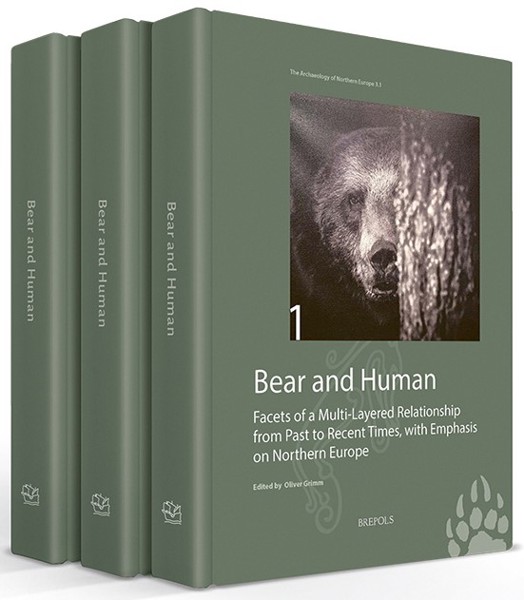
Between Bones and Beliefs
Human-Bird Relations in Central and Northern Europe in the First Millennium AD
Klaudia Karpińska, Riley Smallman, Sigmund Oehrl (eds)
- Pages: approx. 225 p.
- Size:216 x 280 mm
- Illustrations:37 b/w, 40 col., 6 tables b/w., 1 maps b/w
- Language(s):English
- Publication Year:2026
- € 100,00 EXCL. VAT RETAIL PRICE
- ISBN: 978-2-503-61482-3
- Hardback
- Forthcoming (Apr/26)
- € 100,00 EXCL. VAT RETAIL PRICE
- ISBN: 978-2-503-61483-0
- E-book
- Forthcoming
- Contains contributions in Open Access
*How to pre-order?
This book explores the entanglements of birds within daily life, rituals and mythology of Iron Age people across Central and Northern Europe in the 1st millennium AD, explored through archaeology, iconography, historic literature, artefact analysis, and ethnography.
Klaudia Karpińska is a Doctoral Research Fellow at the Museum of Cultural History, University of Oslo.
Riley Smallman is a zooarchaeology researcher at University of Exeter. Their research focuses on human-avian relationships from prehistoric to modern-day Britain.
Sigmund Oehrl is a Professor of Archaeology at the University of Stavanger, Norway (Arkeologisk museum, Universitetet i Stavanger). His research focuses on Iron Age and early medieval art and iconography, Scandinavian pre-Christian religions, Christianisation, animal-human relations, and runology.
Human-avian relationships developed in many ways throughout the Iron Age, particularly in the first millennium AD in Central and Northern Europe. These airborne animals foraged and scavenged close to settlements, inviting interactions — wild birds were hunted, and domesticated poultry were bred for meat, feathers, and eggs; other birds were kept for entertainment or sport, with raptors trained for falconry, and the importance of birds is noted in texts ranging from Pliny the Elder to Old Norse poetry. This volume offers new insights into the extraordinary role played by birds in the past, from their roles in the pre-Christian beliefs and rituals of Iron Age societies to their appearance in early Christian iconographies, and from the discovery of their remains in everyday and ritual contexts to the styles employed by artists on jewellery and weapons. The result is a unique insight into the important relationship between birds and humans in the cultures of Central and Northern Europe in the first millennium AD.
List of Illustrations
Introduction
Part 1: Murderous Talons and Sharp Beaks: Iron Age Raptors and Falconry Relationships
1. European Graves with Raptor Bones (c. AD 500–1000) and Raptor Imagery Revisited: On the Different Evidential Values for the Practice of Falconry
Oliver Grimm
2. Viking Age Falconry in Norway as Seen by a Modern Practitioner
Ellen Hagen
Part 2: Reimagined and Recreated: Birds in Iron Age Iconography and Symbolism
3. Ein fjölkýngiskona var þar komin í álftar ham: Aquatic Birds and the Afterlife Journey in the Imagery of the Gotlandic Picture Stones
Sigmund Oehrl
4. Christian Doves and Óðin’s Ravens: The Birds of the Manx Crosses
Dirk H. Steinforth
5. Birds in Pre-Christian Slavic Iconography and Religion
Paweł Szczepanik
6. Wonders from Beyond: ‘Bird’s Feet Pendant’ from a Grave of a Viking Age Ritual Specialist at Fyrkat, Denmark
Leszek Gardeła
Part 3: Flights of the Otherworld: Birds in Iron Age Funerary Practices and Beliefs
7. Funerary Practices Most Fowl: Patterns of Symbolic Chicken Deposition Through Iron Age and Roman England
Riley Smallman
8. ‘Quoth the Raven’ — On Thought, Memory, Cognition, and Multispecies Engagements in Scandinavian Iron Age Beliefs and Society
Kristin Armstrong Oma
9. Blood on Ashes: Unburnt Domestic Chicken Remains in Viking Age Cremation Graves
Klaudia Karpińska




